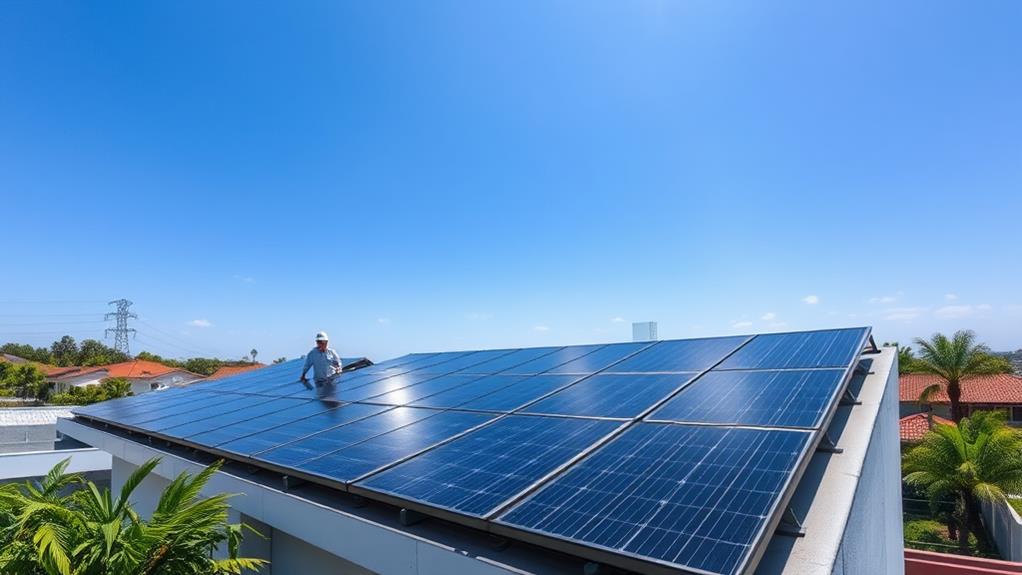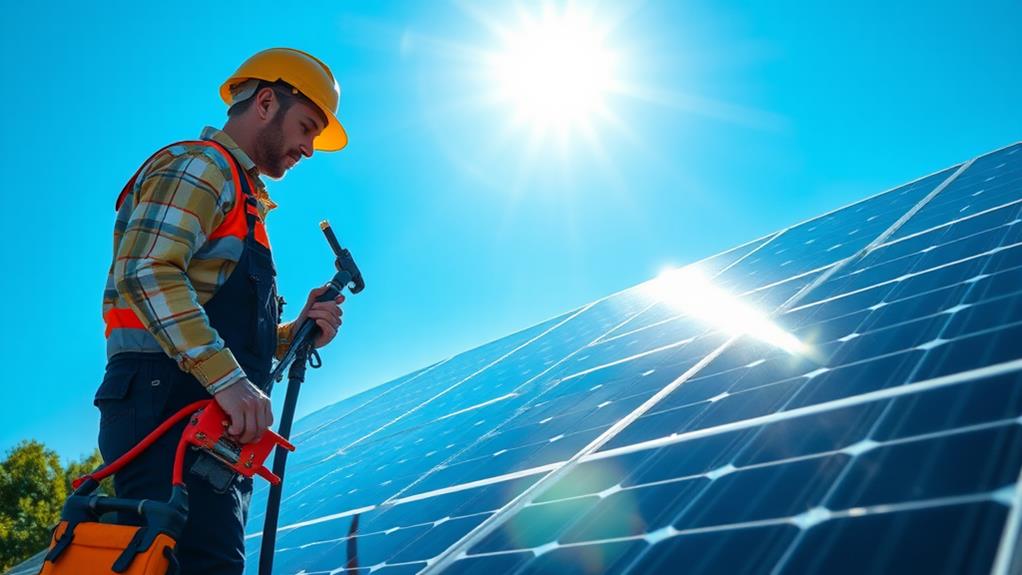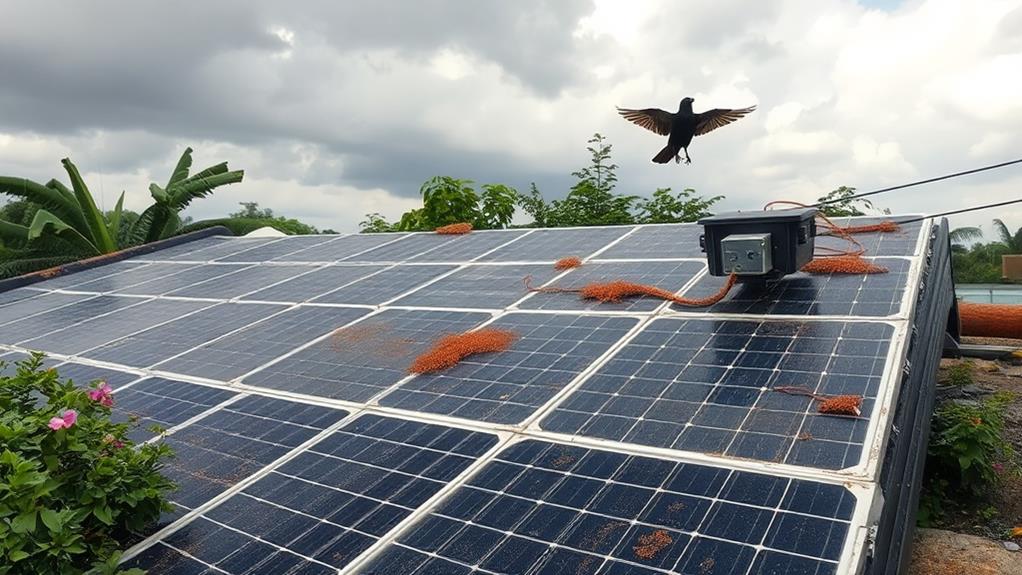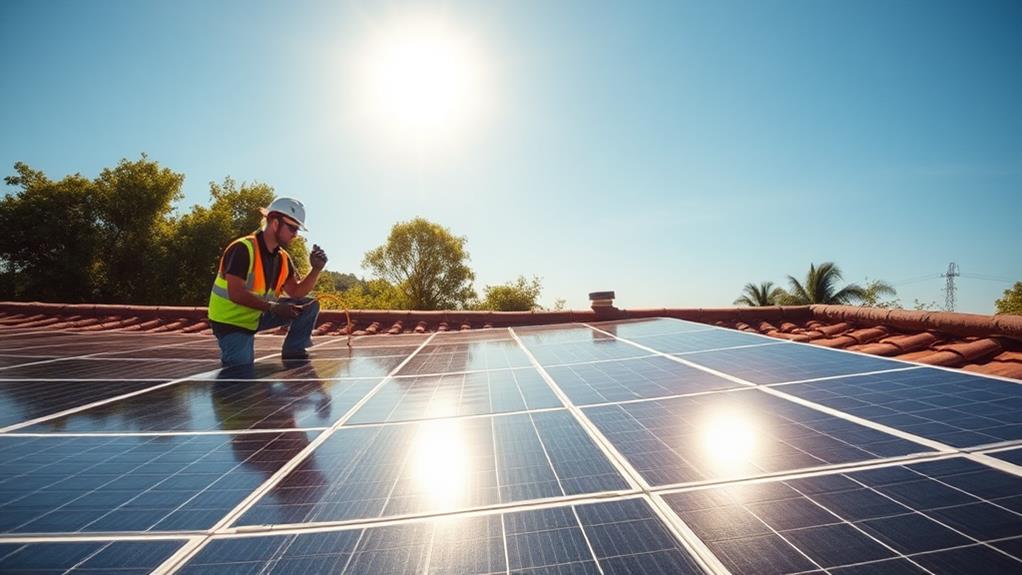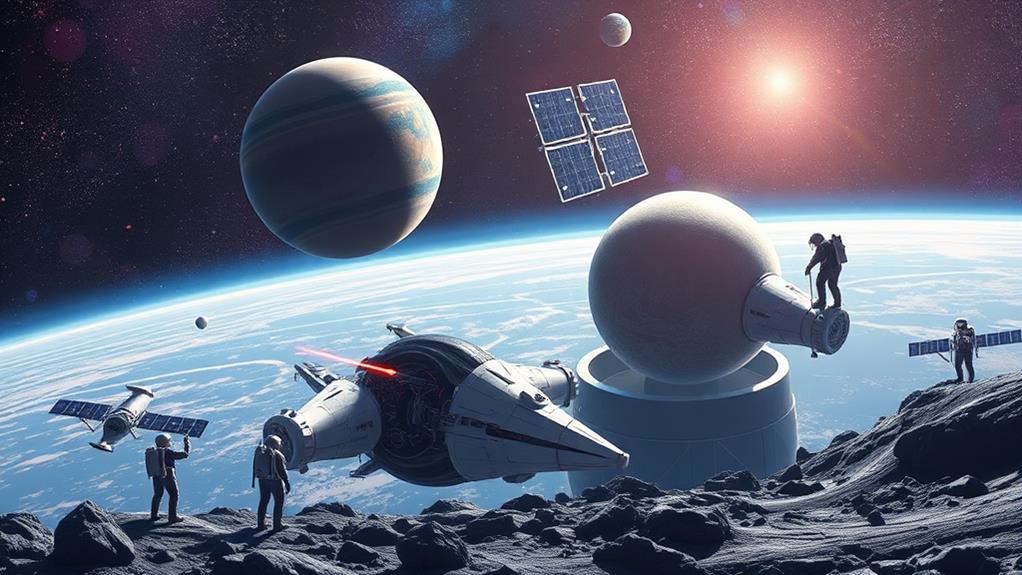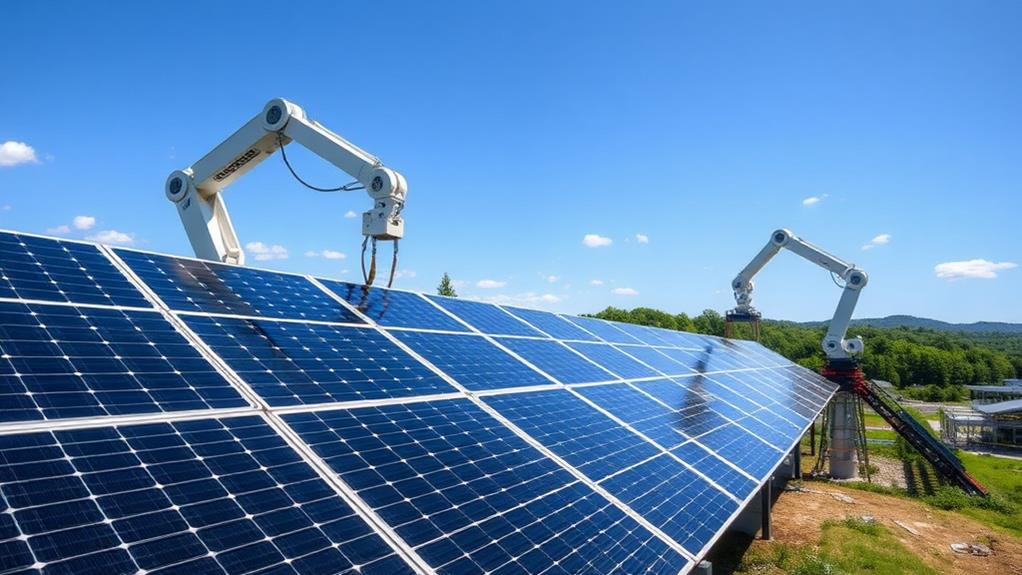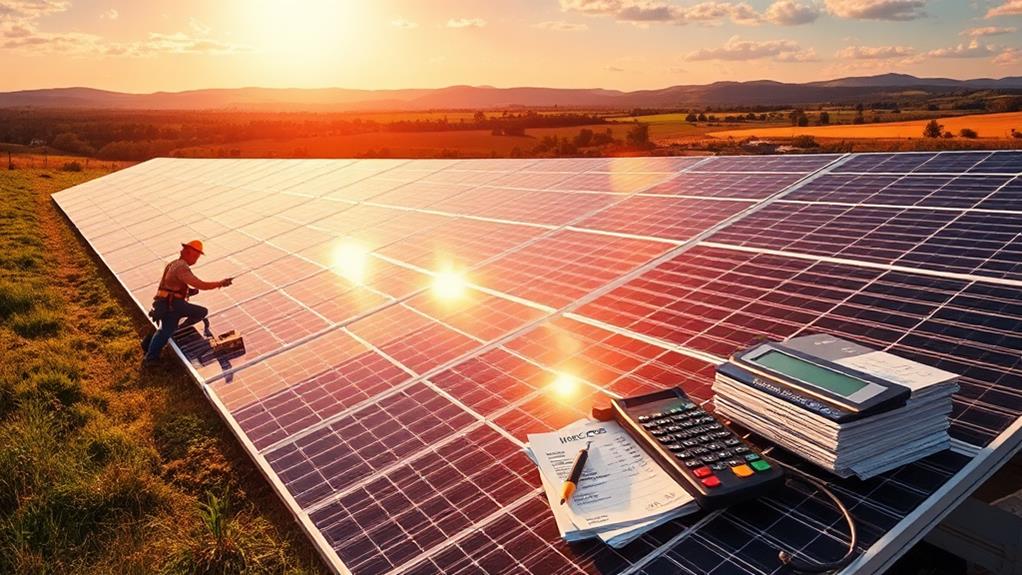When we plunge into solar system installation, it's essential that we evaluate site suitability by analyzing shading and roof orientation—we want maximum sunlight exposure. Navigating local regulations guarantees compliance and smooth permitting. Let's scrutinize energy requirements, examining our utility bills to assess consumption and future needs. Selecting reliable contractors is crucial; their expertise will lead us through design, permitting, and maintenance, so assessing credentials and reviews can't be ignored. Finally, addressing installation challenges, including deciding between ground or roof installations, ensures accessibility and security. As we delve further, we'll uncover more essential tips for a successful installation.
Key Takeaways
- Analyze roof orientation and shading to ensure optimal sunlight exposure.
- Understand and comply with local regulations and zoning rules.
- Assess past and future energy needs to determine system size.
- Select reputable contractors with strong credentials and positive feedback.
- Consider installation type and ensure accessibility and security for maintenance.
Assessing Site Suitability
Evaluating site suitability is crucial when considering solar system installation. Ensuring our community benefits from efficient energy solutions begins with a comprehensive shading analysis and understanding of roof orientation. These elements determine the amount of sunlight our panels can capture. It's important to verify if our roofs are positioned in the optimal direction for maximum sunlight exposure and if their inclination suits our geographical location.
Analysing sunlight availability throughout the day is essential. Ideally, the site should receive 5-7 hours of sunlight daily for effective energy production. This involves identifying any obstructions, like nearby trees or buildings, that could cast shadows on our solar panels. Conducting a detailed evaluation of these obstructions allows us to plan effectively to either remove or work around these barriers.
The local climate significantly influences the performance of solar panels. While assessing site suitability, it's critical to consider how factors such as cloud cover and seasonal changes might affect their efficiency. Ensuring the site is ideal lays the groundwork for a successful solar installation.
Navigating Local Regulations
Understanding local regulations is essential for a smooth solar installation. The permit process and zoning rules can differ greatly from one community to another. This variation means what works in one area mightn't be applicable in another. Vigilance and proactivity are needed to grasp the specific requirements of our locality.
The permit process often requires submitting detailed plans that demonstrate compliance with building codes and safety standards. Engaging with local authorities early ensures all necessary boxes are ticked. It's not just about obtaining approval; it's about feeling secure in the community's acceptance, knowing we've met shared standards.
Zoning rules influence where and how solar panels are installed, affecting everything from placement to visual integration with the surroundings. Consulting experienced local installers can help navigate these waters with confidence. Compliance is a commitment to building a sustainable future together, avoiding project setbacks or unnecessary costs.
For instance, in Johannesburg, regulations may require solar panels to match the architectural style of the building. In Cape Town, there may be restrictions on panel height. Consulting local experts ensures compliance with these unique stipulations. SolarEdge and SunPower offer reliable solar panel options that are often recommended for such projects, providing efficiency and aesthetic integration.
Evaluating Energy Requirements
Assessing our energy requirements is a vital step in designing an efficient solar system. As a community committed to sustainability, understanding our consumption patterns helps ensure our solar system meets our needs.
Begin with analysing past utility bills, which provides insights into our average monthly energy consumption. This information is crucial for accurately sizing our solar system.
Consider future energy needs, taking into account potential lifestyle changes or expansions. This approach ensures that our solar system remains effective and adaptable.
Identifying periods of peak energy consumption is also essential. Knowing when our energy use is highest allows for optimisation of solar system design, enhancing performance and cost savings.
Energy consumption data aids in calculating the number of solar panels required. This not only improves energy efficiency but also reduces reliance on the grid.
Careful planning, based on a thorough energy consumption analysis, empowers us to make informed decisions. Together, we can develop a solar system that's both cost-effective and aligned with our shared goals for a sustainable future.
For instance, using high-efficiency solar panels like the LG NeON 2 can significantly contribute to achieving these objectives.
Additionally, incorporating a solar inverter such as the Fronius Primo can further optimise energy conversion, ensuring maximum usage of the solar power generated.
Selecting Reliable Contractors
Selecting the right solar specialists is a vital step in our solar system journey. As a community dedicated to sustainable energy, choosing professionals with strong credentials is key. Their expertise ensures the success and smooth execution of our project. We should scrutinise customer feedback, examining reviews and ratings to assess the reputation and reliability of potential contractors. This approach helps us feel secure in our choice of a dependable partner for our solar venture.
Requesting quotes from several contractors is essential. Comparing services, warranties, and costs offered provides a comprehensive view of available options, aiding an informed decision.
A reliable contractor will guide us through the design, permitting, and maintenance process, ensuring support at each stage. Enquiring about financing options and available incentives can lead to significant cost savings and make the investment more manageable.
In our search for the right partner, prioritising these elements is crucial. This ensures our solar system installation is in capable hands, bringing us closer to a sustainable future with confidence and peace of mind.
Addressing Installation Challenges
Addressing the challenges of solar system installation requires meticulous planning and adaptability. Opting for solar energy presents choices: ground or roof installations. Roof-mounted systems often contend with shading from nearby structures, which can reduce energy efficiency. Solutions include pruning trees or employing advanced solar panels like the SunPower Maxeon, which are designed to maintain performance in partial shade.
Ground-mounted systems offer opportunities to optimise sunlight exposure. They provide greater flexibility in placement and orientation, enhancing electricity production. Larger installations become feasible since they aren't restricted by roof weight limitations, allowing us to harness more power.
Accessibility is also crucial. Ground-mounted systems simplify maintenance and repairs, ensuring reduced downtime and peak performance. However, they come with additional considerations. Land allocation, regular upkeep, and security measures are necessary to protect our investment. For instance, using security cameras and fencing can help safeguard the installation from theft or vandalism.
Conclusion
As we move towards using solar energy, we've looked into key steps to ensure a successful installation. By checking if a site is suitable and understanding local rules, we set the stage for a smooth process. Assessing energy needs helps us tailor the system to fit, while picking reliable contractors ensures quality work. Even if challenges come up during installation, facing them head-on clears the way for a sustainable future. We at Deo Solar are excited to support this change and power our lives with renewable energy.
If you have any questions about our products, such as Rail-Less Solar Brackets, End Spacers, Structural Brackets, Ground Mounted Solar Systems, Corrugated Brackets, and Earthing Plates, or our services like the DeoSizer Tool, Evaluation and Design, Maintenance and Support, and Solar Installations, please do not hesitate to contact us. We invite you to reach out to Deo Solar for more information.

